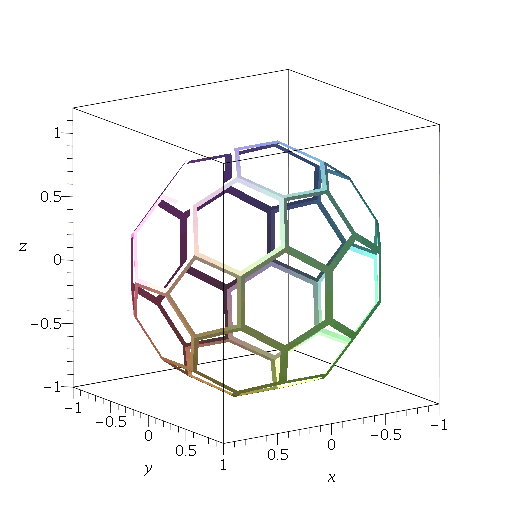Construction of an optimal electron cage
Electrostatic potential is a harmonic function on any region without charges. It has no local minimum, in fact the value at the origin is the average of the potential over a sphere centred at the origin within your "cage". Therefore it is impossible to do what you want: there will always be a path the electron can take to escape to infinity.
EDIT: Just for fun, I tried it numerically using $60$ unit charges at the vertices of a truncated icosahedron, with $100$ randomly chosen initial velocities with speed $0.01$. By time $t=40$, all but four had managed to escape the cage. An animation of the trajectories is here. The last one escaped by $t=70$.
Here is Robert Israel's animation.
